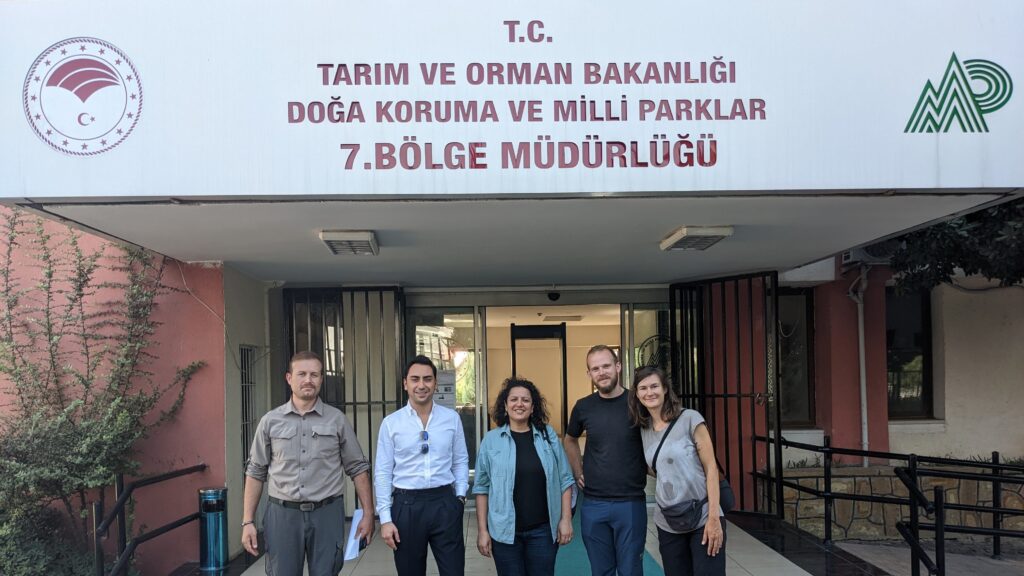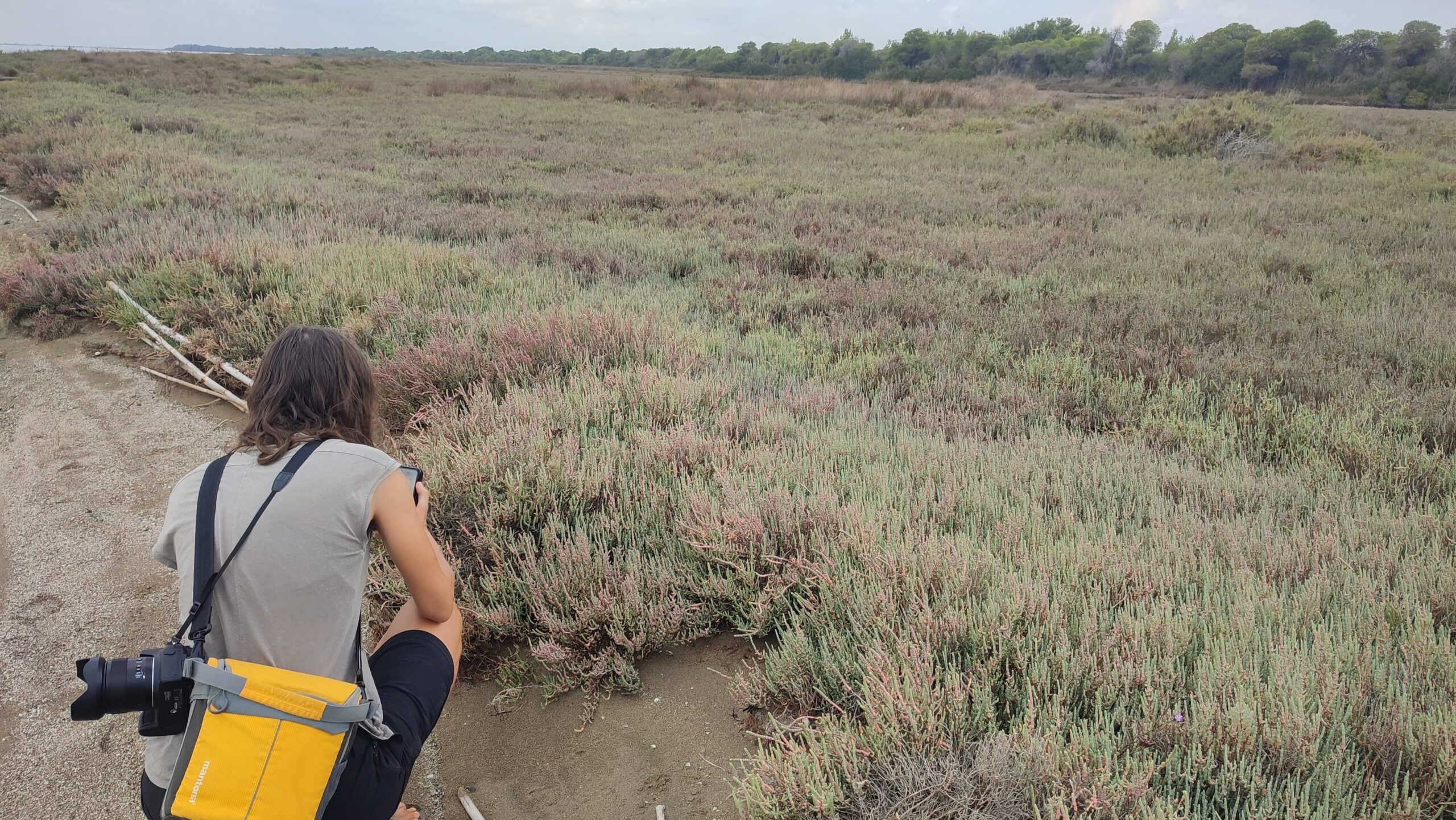The Yumurtalik lagoons are a wetland on the southeast coast of Turkey that will create ambivalent feelings in every nature conservationist. A highly biodiverse natural habitat on one of the most important bird migration routes in the world, where many environmental problems threatening this wildlife heaven come to the surface.








A small selection of plant species endemic to the Yumurtalik lagoons; by Yusuf Ardic
The Yumurtalik lagoons are a river delta in the gulf of Alexandretta on the eastern edge of the Mediterranean Turkish coast. It highlights the incredible climatic diversity in Turkey as the climate here is subtropical with warm winters and hot, humid summers. This creates a unique biodiversity where species of Anatolia meet species that are associated with Africa like Egyptian mongoose, Common chameleon or Asia like Jungle cat and Black francoline. It also makes the region important for growing crops considered exotic in Europe like pomegranates, bananas, peanuts, cotton and endless fields of citrus fruit. Moreover, it is an important stop over or wintering site for migratory birds. In winter, up to 5000 storks and cranes each can be found here along many other species. If this would not be enough, the Yumurtalik lagoons are also home to the last remaining Aleppo pine forest in Turkey and an important breeding site for sea turtles.
A National Park protects the remaining wetlands
To protect this unique biodiversity and bird habitat, the Yumurtalik lagoons are a National Park and RAMSAR site. Not only did we spend two days in the park with local nature conservationists Lale Aktay and Özgun Söyer, but we also visited the authority that manages the park in Adana. We talked to Yusuf Ardic, who is responsible for the park, and Hilmi Catal, the director of National Parks for the seventh province. They showed us the beauty and diversity of the lagoons, but also told us that there are many issues threatening the wildlife.


Because the climate is so beneficial to grow fruit and crops the majority of the Cukurova plain that stretches over 5000 km² has been turned into intense agricultural land. While hundreds of years ago, most of the plain has covered by wetlands, nowadays they are restricted to several protected areas along the coastline. And agriculture as well as animal husbandry are encroaching ever closer towards or even into the protected areas. Sand dunes that provide valuable and rare habitats are turned into fields reaching almost until the beach. This and grazing by sheep destroy habitats and increases the erosion of sand dunes by removing permanent vegetation. Such activities further accelerate the erosion problem that is mainly caused by the construction of dams and other barriers in the waterways that hold back the fertile sediment that created the delta and is 300m deep in some places.



The sand dunes are home to many of the endemic species in Yumurtalik; by Yusuf Ardic
Intense agriculture pollutes the lagoon
These human activities not only limit the space for biodiversity, but also lead to other problems. On most of these fields, conventional agriculture with up to three harvests is practiced. This means plenty of fertilizers and pesticides are used, which accumulate in the soil and get washed out into the waterways that are so crucial for the Yumurtalik lagoons. The fertilizers cause eutrophication, while the pesticides can kill off small insects and other animals that are crucial food for migratory birds and other species.
Another main problem can be seen everywhere in the lagoons and on the fields around. Turkey does not have a functioning waste separation and recycling system. In addition, many people are not educated about the problems caused by plastic in nature. This results in a huge problem with littering and plastic pollution. Everywhere in the lagoons, we find plastic bottles and bags and even big trash items like construction waste and car tires. Throughout our travels in this region, we witness people dumping bags full of trash into nature. The shocking climax for us is when we realize that farmers here cover their crops in plastic film to protect, but instead of removing it from the fields after the harvest, they plough it into the fields. Some fields or full of plastic pieces that are incorporated into the soil, which makes it impossible to remove them again. While this plastic might have gotten here in only one year, it will never go away again.

Poaching and illegal exploitation threaten biodiversity
Another problem in Yumurtalik is poaching of birds and other wildlife. During the three days we spent here, we heard several times that poachers were caught. The killed animals are normally neither sold nor eaten, bird hunting is simply a sport or leisure activity for some people. Illegal fishing is similarly a problem. It is forbidden in the protected areas and some practices are generally out ruled. This unfortunately does not stop all locals from doing it anyway. Locals also illegally collect plants in the protected areas, mainly reeds and Salicornia. Reed has many uses and Salicornia is popular as a salad in this region.

Luckily, Yusuf and the rest of the national park administration are fighting these issues and have already achieved many successes. Yusuf tells us that the legislation and its enforcement are already sufficient, what is missing is educating locals. There are 22 rangers that enforce law in the park. Most of them are from the villages around the park and familiar with the area and well connected, too. They patrol the park to catch poachers, illegal fishers, plant collectors, farmers that expand their fields into protected areas, shepherds that lead their herds to graze in the park and people littering. For this task, they cooperate closely with the Jandarma, the local police force, and issue fines as well as more severe punishments.


The black francoline is one the bird species that is threatened by poaching; by Yusuf Ardic
Education first, enforcement second
But law enforcement should not be the primary response to rely upon. Education and raising awareness are more effective, easier and more sustainable. Yusuf has realized this and works towards educating local communities, especially the young generation. He tells us that this is the main shortcoming currently as long-lasting protection is only possible if local people internalize the value of the protected areas. For this reason, he founded a Wildlife Discovery Club at the nearest university. He shows the students the area, teaches them how to conduct biodiversity monitoring and does all kinds of activities with them like clean-ups at the beach. Similarly, the rangers spread awareness amongst villagers.
Yusuf emphasizes that it is crucial to understand the socio-cultural context and environment around a protected area and tells us a story as an example:
“I once met a seven-year-old boy in Yumurtalik that carried a gun with him. I asked him what he is doing with the gun and he said that he wants to hunt birds, just like his father. I said that it is illegal and I must fine him. But I also told him that I will forgive him if he is able to find a black francoline, one of the park´s rare birds. Of course, without killing or disturbing it. He indeed could show me a nest of a black francoline, which is notoriously hard to find. Since then, he has not only stopped hunting birds, but he cares for them and even nursed injured birds back to health. “
Yusuf Ardic
In summary, our visit to the Yumurtalik lagoons was beautiful, eye-opening, concerning, but also encouraging. It is a beautiful wetland full of biodiversity from different parts of the world that is under pressure by many of the threats that are common for most protected areas. However, the Yumurtalik lagoons are in good hands. There are many dedicated people working to protect it every day and most importantly, a new generation is growing up with a mindset that values its biodiversity and uniqueness.


Pingback: Quo vadis, Turkey’s nature? - biking4biodiversity.org